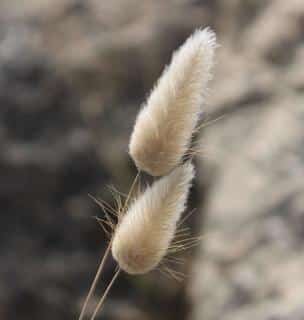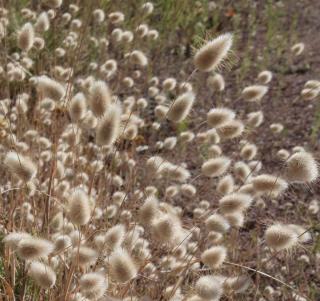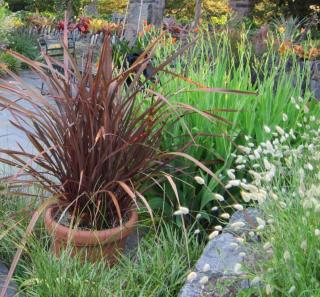

Lagurus ovatus key facts
Botanical name – Lagurus ovatus
Common name – bunny tail grass
Family – Poaceae
Type – annual grass
Bearing – upright mound
Height – 8 inches (20 cm), reaches 2 feet when blooming (60cm)
Planting density – 6 to 8 plants per sq. yard (m²)
Exposure – full sun
Soil – light and well-draining
Flowering : end of summer
Lagurus ovatus (or bunny tail grass in English) is an annual grass with gray-green blade-like leaves. It stands out from its peers thanks to its surprising original blooms.
At the end of the summer, they are covered in fluffy panicles that sway in the wind and bring a charming touch to your flower beds.

No preliminary preparations are necessary for the planting.
Smart tip:
If your soil is very heavy but you still want to admire the fluffy flowers of bunny tail grass, then all river sand to the soil and work it deep into the ground, about 1 foot or 30 cm deep. After that’s done, transfer the plants from their nursery pots.
Lagurus ovatus is certainly the best grass for a garden with no maintenance. Once planted, nothing more to do! Even pruning at the beginning of spring is optional.

Note: a cold frame is a small shelter with a glass/clear roof, which, among others, protects what’s inside from late frosts by keeping warmth over the night.
Lagurus ovatus isn’t known to suffer from diseases. Pests also seem to pass it by without showing signs of interest.

To highlight them even more, increase contrast in your landscaping by including plants with dark-colored foliage (here with a dark Phormium). Lagurus ovatus doesn’t like having to fight for space, so don’t grow fast-spreading plants nearby.
Good choices would be perennials: Eryngium alpinum (alpine thistle), Penstemon pinifolius (pine-needle beardtongue), Helianthemum (rock rose) or even other grasses such as Briza media (quaking grass), Festuca glauca (blue fescue), etc.